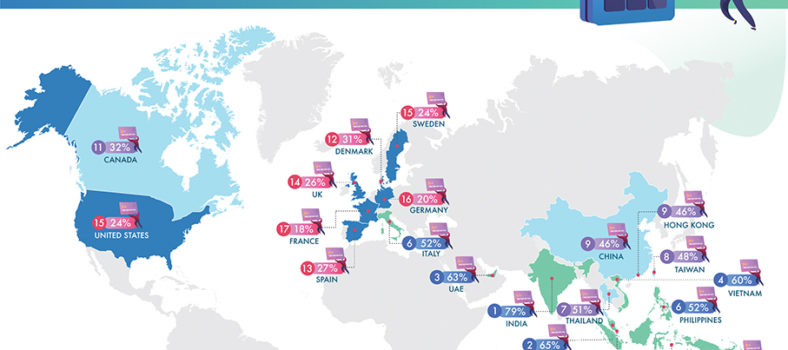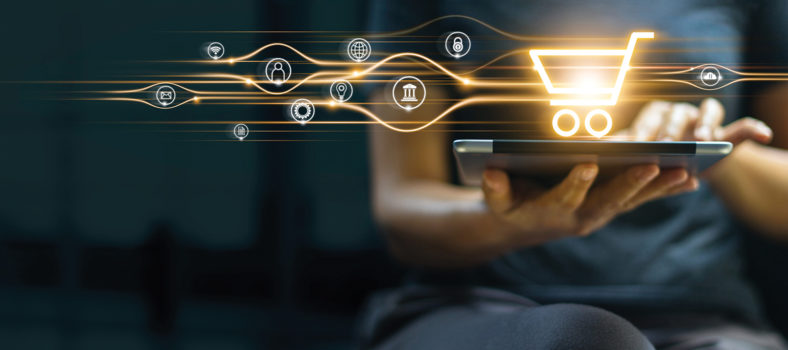 By Dr. Anthony Scriffignano, SVP, Chief Data Scientist, Dun & Bradstreet
By Dr. Anthony Scriffignano, SVP, Chief Data Scientist, Dun & Bradstreet
When Dun & Bradstreet surveyed a group of business leaders, they told us that data informed their decisions an average of 16 times a day but according to our research, nearly half of respondents did not have the right solutions or partners in place to help take advantage of their data.
The widespread disruption caused by COVID-19 has only increased this reliance on data. As well as data on the spread of the virus itself, businesses and government agencies have been using data to monitor fluctuations in the economy, identify risks in the supply chain and get a view on which industries and regions are most impacted.
As most businesses go into 2021 with trepidation and deal with continued economic turbulence, a team of experts from Dun & Bradstreet have identified their top five trends in data and analytics that they believe will be key to helping companies around the world to grow and thrive in the year ahead:
1. Embracing the Digital Workplace
2. Data-led Targeting
3. Predicting the Unpredictable
4. Governance and Ethics
5. Fighting Fraud and Economic Crime
The Expert Panel Commentators
Anthony Scriffignano, Chief Data Scientist
Gary Kotovets, Chief Data & Analytics Officer
Rikard Candell, Director of Analytics
1. Embracing the Digital Workplace
 Gary: Working remotely has become the new norm and accelerated the digitalization of the way businesses are communicating, doing business and managing data. The transformation we’re seeing is dramatic. Interactions are becoming more digital and virtual with an exponential increase in the use video conferencing platforms. Data becomes even more valuable in a digital world to ensure that interaction is efficient and targeted appropriately.
Gary: Working remotely has become the new norm and accelerated the digitalization of the way businesses are communicating, doing business and managing data. The transformation we’re seeing is dramatic. Interactions are becoming more digital and virtual with an exponential increase in the use video conferencing platforms. Data becomes even more valuable in a digital world to ensure that interaction is efficient and targeted appropriately.
Anthony: We’re seeing the three D’s — disruption, digitization and displacement. We’re all working from somewhere else, or at least many of us are, and things are becoming more digital and at the same time, disruption is a massive challenge. This is the time to lean into this new way of working. It’s very exciting if we take the right mindset.
Read our five tips for working from home
2. Data-led Targeting
 Rikard: If we look back to the early stages of the COVID-19 pandemic, a lot of companies prioritised mitigating risks. As a result, companies have spent less time on new business relations, which isn’t a sustainable approach. The risks don’t stop and start with the pandemic. So, attaining new business while working in a new way and trading without meeting clients in-person will need to be top of mind for companies this year.
Rikard: If we look back to the early stages of the COVID-19 pandemic, a lot of companies prioritised mitigating risks. As a result, companies have spent less time on new business relations, which isn’t a sustainable approach. The risks don’t stop and start with the pandemic. So, attaining new business while working in a new way and trading without meeting clients in-person will need to be top of mind for companies this year.
Anthony: We saw a similar shift in the 2008 financial crisis. Companies moved from trying to collect new customers, to trying to collect outstanding debt.
Gary: Marketing and sales professionals in the B2B space will need to adjust and tweak their strategies to be much more targeted in who they reach out to and how they engage with their clients and prospects. There is a need for much more effective way to reach out and engage with customers — and that’s where data comes in.
Rikard: Successful companies have been able to look at their portfolio and prospects and distribute their efforts based on what accounts make the most sense to target. What accounts have the greatest potential? Who is in the market right now and do they engage with us? Where can you allow yourself to spend more manual time and what can you automatically manage?
Read more about how a data-led approach can support sales and marketing activities
3. Predicting the Unpredictable
Gary: We’re seeing it’s become much more important to understand market changes and events and changes in the activities of businesses you deal with. This is due to the unpredictability of the crisis we’re in and the different impact on businesses depending on the type of industry or regions they operate in. Companies need to understand these changes and monitor frequently — this is critical to survival and doing business in these times.
Rikard: I think this puts more emphasis on making sure data is robust and complete, but also the ability to combine traditional sources of information with new and more up-to-date signals will help companies be proactive — rather than reactive — to disruption and thus gives more competitive edge.
Anthony: It’s also very important to consider the pace of environmental change when it’s faster than data’s rate of change whenever we’re assessing the real world. If you don’t, you’ll get in trouble every time. Think about a camera taking a snapshot every minute. You’re going to see what happens at every stroke of a minute, but you’ll miss everything in between. That’s what’s happening right now with data and this hyper disruption.
The disruption caused by COVID-19 is happening on top of election cycles, and trade renegotiation, and lots of other things that were happening to disrupt the environment, the ecosystem already. So that’s why we refer to this as a hyper disruption. It’s a disruption of the pre-existing disruption.
Check out our free COVID-19 Commercial disruption tracker
4. Governance & Ethics
Anthony: It’s very important for anyone making decisions with data to ask what right you have to use this data. This needs to be part of your data management approach. Any company that collects data must be cognizant and adhere to laws all over the world that are evolving all the time.
Wider perspectives are also changing and people want things to be increasingly personalised but they also want privacy — so its important to strike a balance to ensure compliance, but also an ethical approach. This is a complex balance to achieve.
Gary: I think the increase in digital and online engagement has definitely increased the pressure for businesses to govern how they engage and work with others, and will continue to do so.
Customers and partners have increasingly high expectations that go beyond just regulatory compliance. It’s not just about providing ‘clean’ and accurate data. Businesses and individuals want data and analytics they can trust and use to make decisions. It’s more important than ever to be able demonstrate transparency and ethical practices, with environmental, social and governance reporting fast becoming a requirement of doing business.
Companies will increasingly need to evidence that they are collecting and using data responsibly as part of standard tender processes.
5. Fighting Fraud & Economic Crime
Anthony: Fraudsters know everything is changing and that organisations are distracted by that change. Now they’re not just patiently waiting for things to get back to normal before plying their pre-existing trade. They’re looking for new ways to be sneaky and they’re not worried about the data laws and ethics we’re worrying about.
So new types of fraud are emerging in this new environment, and they’re emerging much faster than we’re able to see the trail they’re leaving behind. Monitoring data on your business identity is critical to protect your organization from attack.
Gary: Businesses have less of a physical view into the companies they’re dealing with as a result of the exponential increase in digital interaction. Therefore, it’s become more critical to use data signals to identify red flags that may indicate that company you are doing or plan to do business with is involved in fraudulent activity.




